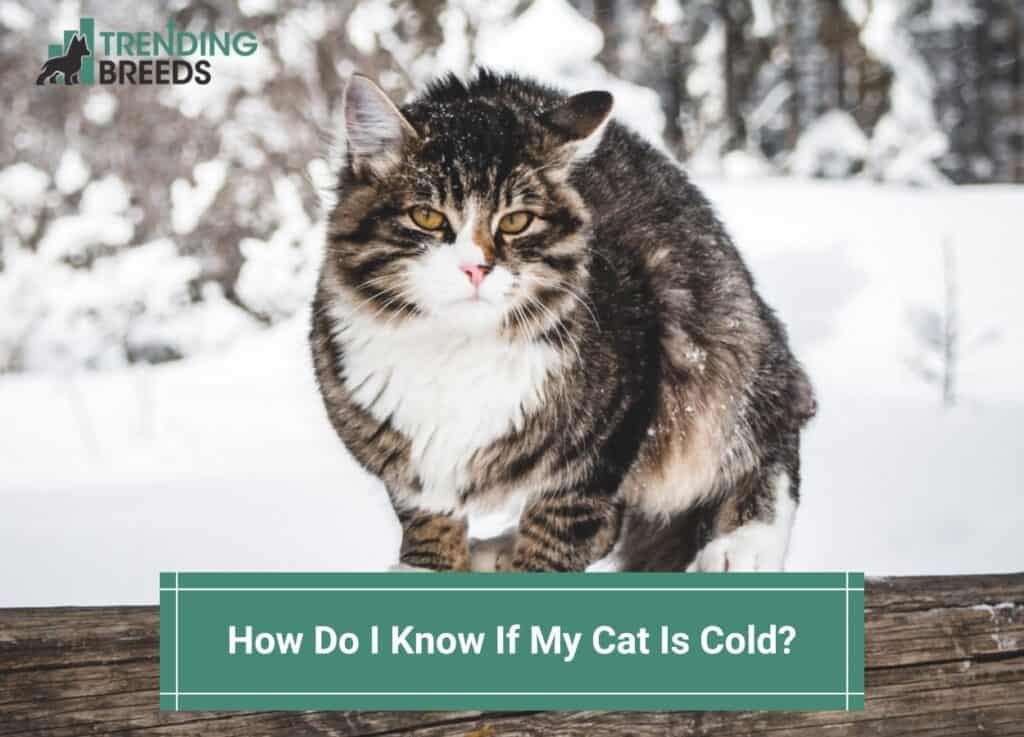
Seeing as your cat spends all of his time inside and is essentially always wearing a fur coat, you might not think he or she can become cold. You might wonder, “How do I know if my cat is cold?”
Cats do get cold (even if it’s just from the AC). It’s crucial to understand when to raise the thermostat and how to tell if your cat is cold.
Shivering, puffing of the fur, a cold tail or nose, and a desire to curl up in warmer places are all indications that your cat may be too cold. But there are ways to keep your pet cozy during the chilly winter.
Keep reading below for more information.
Before you scroll further down this guide, check out these other cat-related articles: How To Put Your Cat on A Diet and Is Rosemary Oil Safe for Cats?.
Table of Contents
How to Tell If Your Cat Is Cold
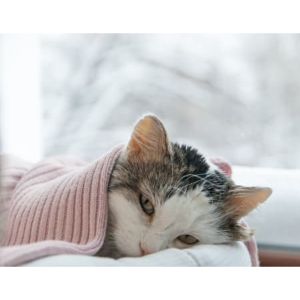
Following are some of the signs by which you can tell whether your cat is cold.
1. Shivering
Like a human, your cat may begin to shiver if it is extremely cold. It’s important to keep an eye on your cat’s other behaviors because shivering may also indicate anxiety, pain, or illness.
For instance, panting while shivering may indicate stress or pain. It may also indicate the presence of a fever, particularly if it is accompanied by a decline in eating or grooming. Visit your veterinarian if you are uncertain.
2. Hunching Down & Puffed
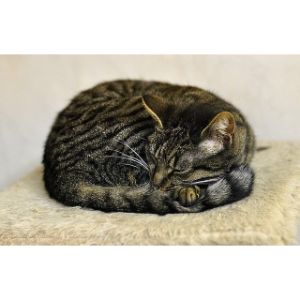
Cold cats may crouch closer to the ground and puff up slightly. A cat frequently senses danger when she rises erect and puffs her hair. But if she’s stooped over and puffed out a little, she might be cold.
3. Colder Extremities
The tips of a chilled cat’s ears, tail, or nose could feel colder to the touch than usual.
The symptoms of hypothermia in cats include sluggishness, dilated pupils, and shallow respiration. Such symptoms might necessitate urgent veterinary care.
4. Seeking Warmer Places

A cold cat may look for warmer areas more often than usual. Trying to sleep in a warm place, such as a heated vent, or curling up on your lap are examples of this.
Of course, each cat is different in this regard. You should keep an eye out for any changes in behavior because some cats crave cuddles all the time, regardless of the weather.
How Cold Inside Is Too Cold for Cats?

Is it okay for your cat if you keep your house cool in the winter so you can cuddle up in blankets? The breed determines the best room temperature for cats in the winter.
Cats’ normal body temperatures can range from 99.5°F to 102.5°F, but the amount of heat cats require to stay comfortable varies with their size and coat type.
While a short-haired or slender cat may require a warmer environment, a long-haired cat, like a Ragdoll, will be comfortable in a colder environment.
On the other hand, a hairless cat, such as a Sphynx, will experience extreme cold even if the temperature in your home is only slightly chilly.
Therefore, it is essential to keep an eye out for the warning signs mentioned above and create nesting spots for your cat to warm up in or slightly warm up the house.
Factors That Could Make Your Cat Sensitive to Cold
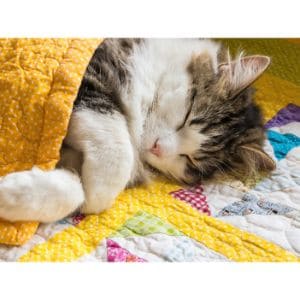
The degree to which your cat adjusts to the cold depends on various circumstances, some of which can make some cats more susceptible.
A cat may be more susceptible to the cold depending on age, type, coat length and fur, size, and any underlying medical issues.
- Age: Kittens and elderly cats have a harder time controlling their body temperatures than adult cats, which makes them more susceptible to being chilly.
- Type of coat: Because hairless cats have almost nothing shielding their skin, they are more susceptible to the cold than cats having fur, and they occasionally need a sweater, even indoors. Similarly, cats with thinner coats or shorter hair tend to feel the cold more quickly than those with longer or thicker coats.
- Size and weight: Smaller cats have less body fat to keep them warm than larger cats. Thus, they become cold more rapidly.
- Underlying medical conditions: Cats may be particularly susceptible to cooler temperatures due to certain medical diseases, such as hyperthyroidism.
How to Keep Your Cat Warm and Cozy
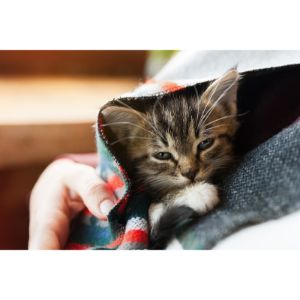
It’s vital to pay attention to the numbers on your home’s thermostat since properly dressed humans can withstand chilly temperatures better than cats.
We have blankets and flannel pajamas to keep warm and cozy during the chilly winter nights. Such comforts are not available to your cat.
But provided they have a warm place to curl up, most cats can tolerate a house’s ambient temperature of, say, 60°F.
According to Texas A&M Veterinary Medicine, be cautious of temperatures lower than 45 °F, whether you have an outdoor cat or an indoor-outdoor cat.
Cat Behavior Associates says older, leaner cats may require higher temperatures to feel comfortable.
Here are some extra suggestions to help your cat warm up.
Provide a Blanket
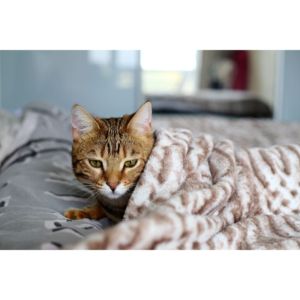
The coziest material for a cat to snuggle in is flannel. And despite how adorable it might sound, refrain from wrapping your cat in a blanket. Restriction irritates them. Allow your cat to use the blanket however he wants.
Test Out a Heated Bed
Many options are available here, including standard and donut-shaped pet beds.
One piece of advice: pick a heated bed that resembles your cat’s original bed the most (if he sleeps in one). A bonus is a cover that can be easily removed for washing.
What about a simple heating pad that is towel-wrapped? It isn’t the safest choice.
Your cat is at risk of being burned if the heater is not closely monitored and kept on the lowest setting at all times. It is preferable to spend money on a heated pet bed.
While choosing a bed for your cat, remember if they have arthritis or are elderly. Choose a bed that he can easily climb into rather than any that has high sides.
Raise the Cat Bed
Your cat will be more comfortable at a higher altitude since the heat rises. Just be careful not to support his bed with anything shaky.
Use the Indoor Sunlight
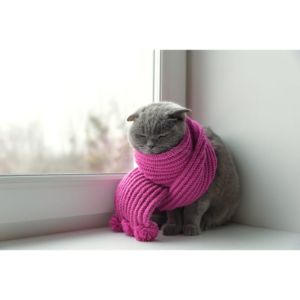
Everyone has a mental picture of a cat peacefully lazing by a window. Keep your curtains open all day so your cat may take advantage of the added heat.
Longer Playtime
Set aside some time each day to engage in interactive play with your cat. Motivate your cat to jump and run. This will raise his core temperature and strengthen your relationship.
More Food
In the winter, cats expend more calories to stay warm so you can loosen your feeding restrictions.
Some vets even contend that instead of feeding cats the same amount year-round, we should adjust the quantity we give them based on the season, giving them more food in the winter and less food in the summer.
Share a Bed
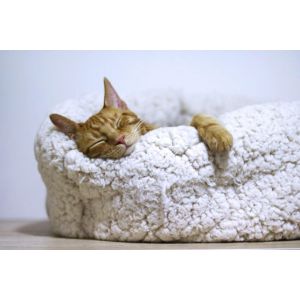
If it doesn’t disturb your own sleep, you might want to let your cat snuggle close to you in bed for added warmth.
Keeping Indoor/Outdoor or Outdoor Cats Warm
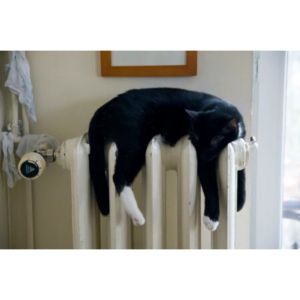
Shelter and food are the key factors that will keep stray cats warm during the winter.
You can make your insulated housing or purchase one from a pet supply store if you’re handy.
A plastic flap can help keep the heat in and ensure the openings aren’t big enough for other animals like raccoons, skunks, or opossums.
Avoid materials like regular towels or blankets that hold moisture; hay and mylar are the greatest insulating options.
Shelters should be placed away from busy places. To save heat, keep them elevated a few inches off the ground.
Also, try to place the shelter’s opening against a windbreak, like a wall or a fence, to lower the wind chill.
Mindful cat owners can set out warmed canned food at predetermined times as food. The cats will learn from this to be on time for a hot meal. Because canned food will freeze if not consumed right away, serve dry food as well.
Water should not be overlooked. To ensure that it hasn’t frozen over, check it frequently.
Above all, remember that your cat is probably cold if you are. He can be warm and safe all winter with just a few easy adjustments.
Frequently Asked Questions
Do cats like being picked up?
Some cats enjoy being picked up, while for others, it may seem like a punishment. Never force a cat to be held when it does not want to be held.
What does it mean if your cat lets you rub its belly?
Cats who let you rub their bellies are showing that they trust you in their space and want attention from you.
Do cats recognize their owners face?
Cats struggle with face recognition, mostly because their faces all look the same. A cat will tell who you are by your smell and the sound of your voice.
So How Do I Know If My Cat Is Cold?
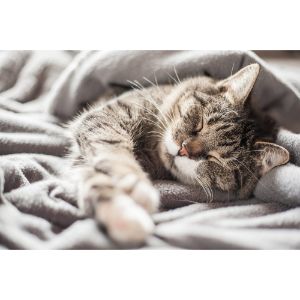
When a cat is cold, there are a few telltale indications to look out for. Use the aforementioned advice to warm up your pet cat if you find it chilly, so they may feel cozier.
Never forget that your cat relies on you to take care of their needs; spoil your furry friend to give them a sense of security, affection, and, most importantly—warmth.
If you find this guide, “How Do I Know If My Cat Is Cold,” informative and helpful, you can check out these other cat-related articles from our team:
You can learn more about cats by watching “40 Awesome Cat Facts to Understand Them Better” down below:




